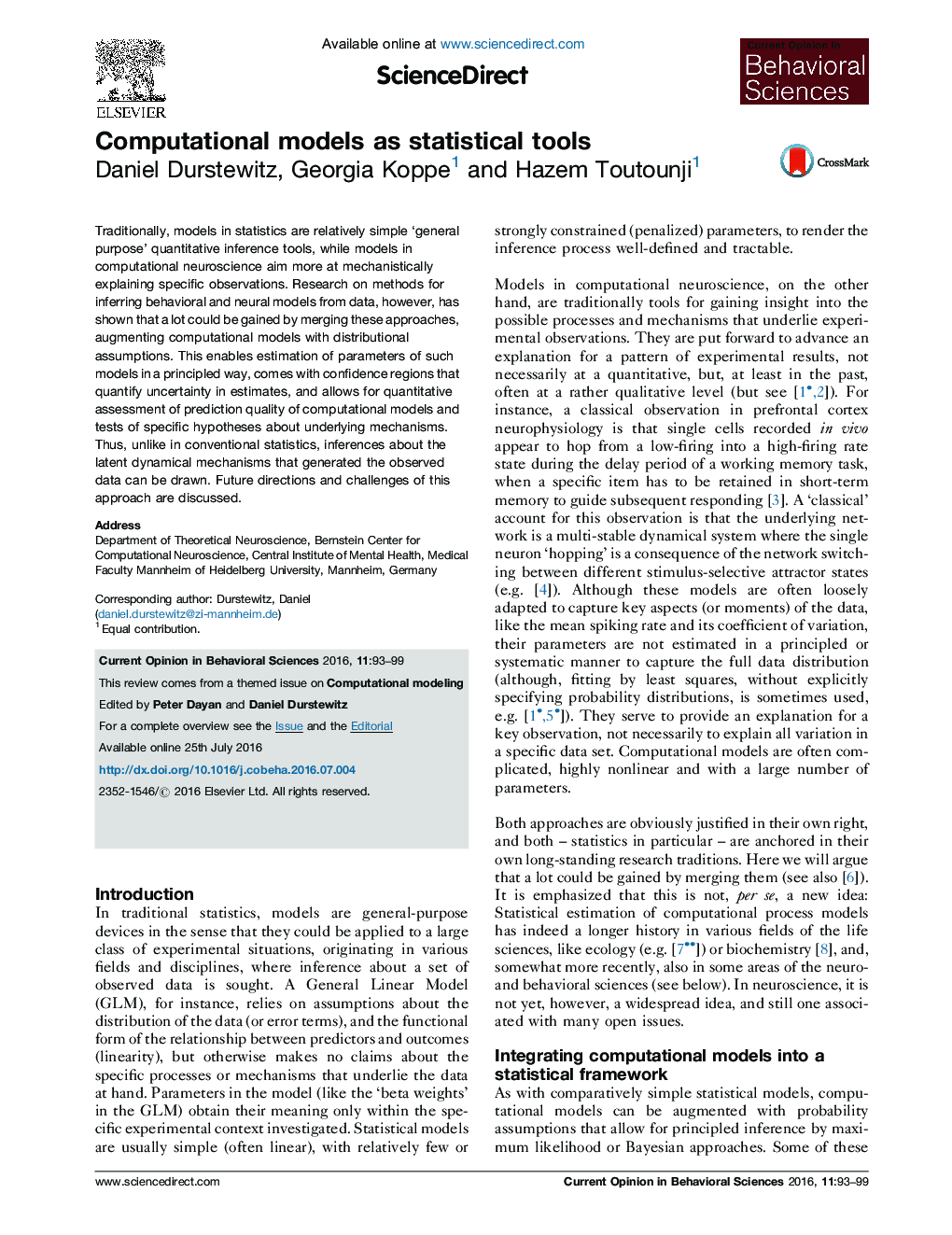| Article ID | Journal | Published Year | Pages | File Type |
|---|---|---|---|---|
| 6260451 | Current Opinion in Behavioral Sciences | 2016 | 7 Pages |
â¢Discusses embedding of computational models within statistical inference framework.â¢This approach enables to infer mechanisms and processes underlying observed data.â¢Reviews recent literature on behavioral and neural computational-statistical models.â¢Addresses future directions like large models and 'out-of-domain' predictions.
Traditionally, models in statistics are relatively simple 'general purpose' quantitative inference tools, while models in computational neuroscience aim more at mechanistically explaining specific observations. Research on methods for inferring behavioral and neural models from data, however, has shown that a lot could be gained by merging these approaches, augmenting computational models with distributional assumptions. This enables estimation of parameters of such models in a principled way, comes with confidence regions that quantify uncertainty in estimates, and allows for quantitative assessment of prediction quality of computational models and tests of specific hypotheses about underlying mechanisms. Thus, unlike in conventional statistics, inferences about the latent dynamical mechanisms that generated the observed data can be drawn. Future directions and challenges of this approach are discussed.
